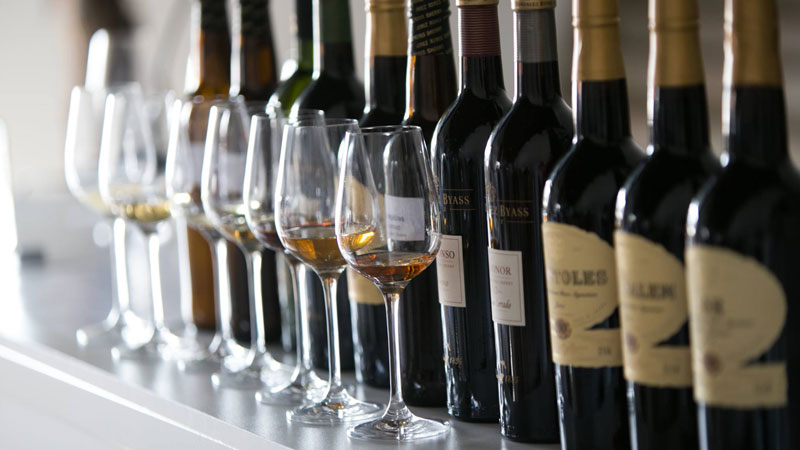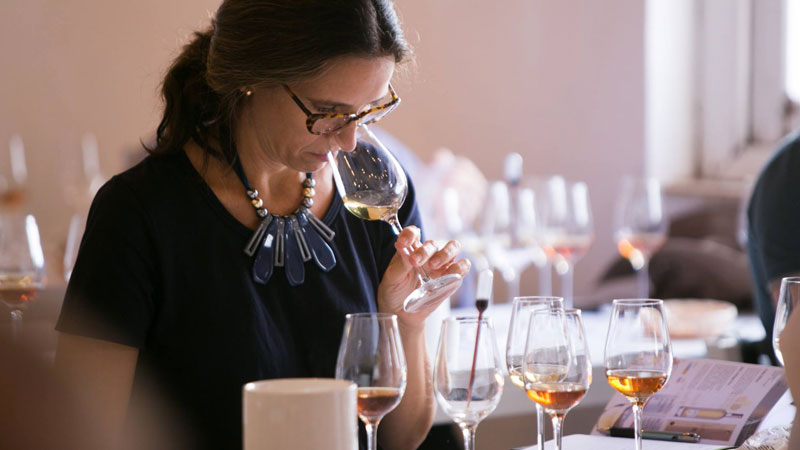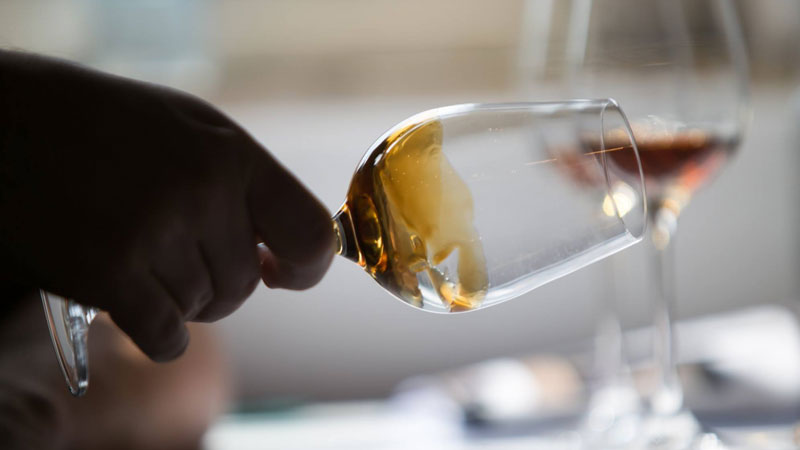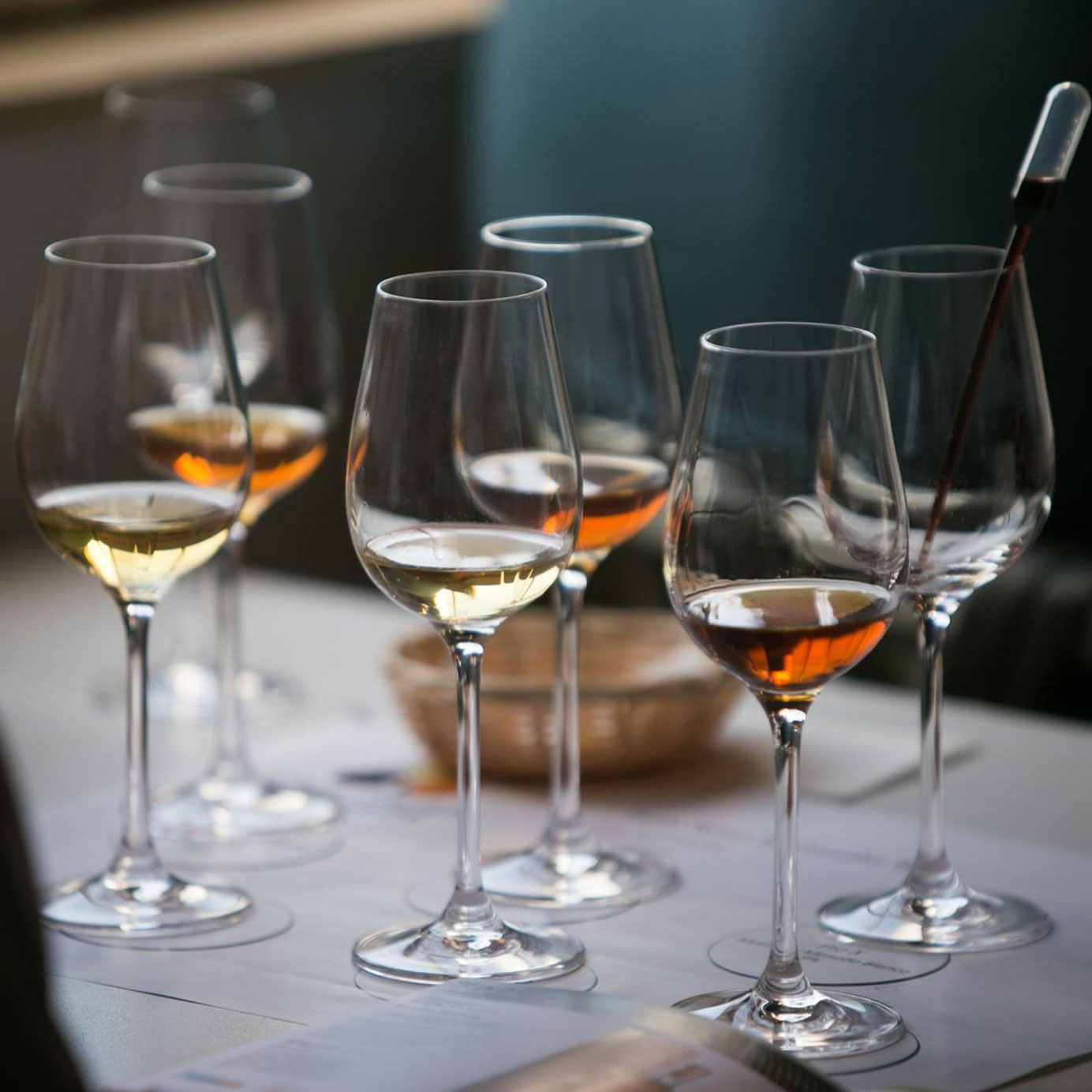Sherry has a PR problem. Much to the chagrin of its enthusiasts and producers, sherry has a reputation for being sweet, dessert-like, and out of style. On many American wine lists, it’s an afterthought at best.
The ironic reality is that the fortified wine from Spain’s Jerez region, also known as the Sherry Triangle, is the driest white wine in the world. It’s also one of the best to pair with a meal, whether you’re eating olives or ramen.
In recent years, and in especially discerning circles, sherry is stepping into the limelight as a cocktail ingredient and dinner companion. Thanks to savvy mixologists, sommeliers, and, yes, tapas lovers, adventurous Americans are slowly but surely exploring sherry’s many flavors and applications.
If the category remains a mystery to you, don’t worry. It’s simpler than it seems.
Types of Sherry
Exactly how many types of sherry exist depends on whom you ask — some say as few as two, and others as many as 10 — but almost every sherry comes from one grape, Palomino. (Of course, there are a few exceptions, namely among the sweet ones.)
Patrick Mata, partner at Olé Imports, which specializes in Spanish wines including Osborne Sherry, breaks it down in three categories: sherry that is aged biologically; sherry that is aged oxidatively; and sherry that ages both ways. How it ages, and how long, determines both its title and flavors.

Fino and Manzanilla (Biologically Aged)
Fino, the driest of the sherries, is “in many ways the archetypal wine from Jerez,” Andrew Sinclair, director of business development at González Byass, producers of Tio Pepe, says. It is aged entirely under the influence of flor, the rather poetic name for a layer of yeast that naturally forms on top of the wine in the barrel. Fino’s “bone-dry” flavor is a result of the flor consuming residual sugar in the wine, erasing any perceived sweetness.
Scientifically speaking, “[because] the yeast consumes any residual glycerol, you don’t get any perception of sweetness” in the final wine, Sinclair says.
Manzanilla is fino produced and aged in Sanlúcar de Barrameda, near the coast, as opposed to the two inland points of the Sherry Triangle. This geographical difference is believed to lend more mineral, saline flavors to manzanilla wines.
If you’re pairing your fino or manzanilla with food, Sinclair recommends bringing it to aperitif hour: Serve it with olives and roasted almonds. “It’s incredibly simple, and shows everything off really well,” he says.

Amontillado and Palo Cortado (‘Half and Half’)
Amontillado is sherry that began life as a fino, then continued aging in the barrel after the flor eventually died (flor is a living organism, after all). Once the flor breaks up and sinks to the bottom of the barrel, “the wine which has previously been protected by this layer of yeast is in contact with the oxygen, so that’s when it’s going to start life as an amontillado,” Sinclair says.
“Amontillado is essentially an old fino,” Sinclair says. He compares Tio Pepe, aged about four and a half years exclusively under flor yeast, with Tio Pepe amontillado, aged 12 years — the initial four, plus “another seven or eight years in a light oxidative manner,” he says. “It’s essentially like an old Tio Pepe.”
Whether a sherry emerges an amontillado or a palo cortado depends on how long the flor survives. Mata describes amontillado as “half and half,” spending about equal time aging biologically and oxidatively, and thus yielding equal parts “yeasty” and “nutty” flavors.
Palo cortado, on the other hand, aspires to be an amontillado, but “mysteriously” loses its flor early, almost “by accident,” Mata says. Because of this, palo cortado produces more oxidative flavors, akin to the rich, nutty characteristics of oloroso.
Tapas are a great pairing for these nuanced wines, but Sinclair encourages experimenting with “anything where there’s some fermentation taking place,” like a rich, gelatinous tonkatsu ramen, or Korean dishes with kimchi.

Oloroso (Oxidatively Aged)
An oloroso is a fully oxidized wine that never saw flor coverage in the barrel. For this reason, oloroso sherries are “always very nutty, very rich, very powerful, and full-bodied,” Mata says. Oloroso’s “bigger and richer” flavors make it a prime candidate for pairing with short ribs, oxtail, umami-driven cheeses, and spicy charcuterie, Sinclair says.
Cream Sherry
Cream sherry begins as dry sherry, then is blended with a sweet grape called Pedro Ximénez, or PX. “There are cream sherries that are amontillado-like, [and] there are cream sherries that are oloroso-like,” Mata says, but “you cannot really call it an amontillado or an oloroso.” The exception to the rule, this sweet sherry style has historically been the most abundant on the international market, Sinclair says. But that’s finally starting to change.
As drinkers become more open-minded, embracing everything from cricket dinners to savory cocktails, sherry is destined for mainstream success. It is a versatile, food-friendly category, palatable in cocktails and straight sipping.
Or, as Sinclair sums it up: “[Sherries are] the driest white wines in the world, the sweetest wines in the world, and everything in between.”
